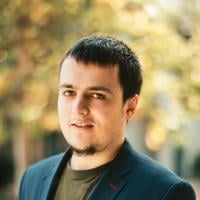Až na výnimky typu Buddha, Ježiš, a pod., naším najväčším problémom je neuvedomovanie si toho, kto sme vo svojej pravej podstate. Z toho vyplýva strach. Jadro strachu je v tom, že naše telo a myseľ je pominuteľné a zraniteľné a kedže sa s nimi stotožnujeme, máme o seba, o svoju existenciu strach. Všetko násilie je dôsledkom rôznych druhov strachu, všetka nenávisť je dôsledkom rôznych druhov strachu, a vlastne mi nenapadá druh utrpenia, ktoré by nebolo dôsledkom nejakého druhu strachu.
Vojna? Strach z vlastnej bezpečnosti, z toho že si ich tí druhí podmania, zotročia, ….
Politické boje? Strach z toho, že ich druhá strana poníži, zoberie im prácu, obmedzí ich na slobode. Strach že nakoniec po odchode z politiky zostanú sami, opustení,…
Vraždy na zakázku? Strach že im ich obete v budúcnosti ublížia. Strach že bez peňazí ktoré za ne dostanú budú trpieť.
Klamstvá? Strach z poníženia, zo straty vymyslenej autority. Strach, že bez boja sa im bude dariť horšie ako ostatným.
Téma strach je teda užitočná nielen pre finančne chudobných ale aj pre finančne bohatých ľudí. Pre babku vo východnom Slovensku, aj pre finančníka Sorosa. ..Nasleduje práca, ktorú som použil v mojich štúdiach (áno, pre učiteľku to bola veľmi nezvyčajná práca) a zdieľam ju tu pre prípad, že by myšlienky v nej niekomu pomohli. Podnecuje človeka strach skúmať a rozumieť mu. Nezakladá si za cieľ urobiť z človeka okamžite po prečítaní niekoho kto už nemá vôbec strach. Škola je tam vyzdvihnutá len preto, že práca musela priamo súvisieť so školou.
FEAR IN SCHOOLS AND ELSEWHERE
1. Introduction
As Jackson [Jackson_a] writes, “It is surprising then that in spite of its prevalence in schools, and despite the fact that fear has received increased attention within sociology generally, fear and anxiety have been relatively neglected by sociologists of education [[Jackson_b, Zembylas]]. Yet, it behooves us as sociologists of education to seek to understand fear. As the Mental Health Foundation (2009, p. 13) points out: ‘understanding how fear works, and how we can better relate to it could make an enormous difference to health and well-being in our society, not to mention enlarging individuals’ potential for living, learning and growing’. Relatedly, understanding how fears operate is important for developing theories and practices to promote social justice: fear is used to sustain hierarchies …”; the understanding of fear is beneficial, but it seems that most humans are lost in this topic.
We all know that it is good to be fearless, but simultaneously we probably do not have any scientific work where the question “How to be not afraid” is solved. Therefore, it is inevitable to find the answer in our own experiences and another human knowledge area. This another area of human knowledge is teaching of spiritual people like Lao Tzu (Laozi), Siddhartha Gautama (Buddha), Jesus, Rajneesh Chandra Mohan Jain (Osho), and others. Many ordinary people believed and still believe those spiritual people, so if we do not have the answer in Science, maybe it is not a waste of time to look at the teachings of those people also. The difference of this work from other similar works is in comparisons of scientific results with spiritual teachings and our own experiences.
This work gives you an answer to the question of fear. Of course, in its essence, it is a hypothesis (like every other written work), so do not believe it immediately; try to prove it by your own experiences. Only then will it be a theory for you. George Ivanovich Gurdjieff says [Gurdjieff]: “I ask you to believe nothing that you cannot verify for yourself”.
I tried to use only the most significant examples from the schools as it is impossible to include all possible scenarios in schools.
2. What we observe
“Everyone, or almost everyone, is frightened of something. It may be the fear of death, loneliness, not being loved, not becoming famous or successful, and the fear of not having physical security and of not having psychological security. There are so many, multiple forms of fear.” [Krishnamurti]
We can see in our society that people would like to be fearless, but they do not know how. The example is the last sentence that a father told his son, mentioned in Mel Gibson's movie Apocalypto (2006): “Don't be afraid ”.
Maybe the fact that we do not know what it means to be not afraid (to be fearless) is why we do not know how to be not afraid. It is illustrated, for example, in Jet Li's movie Fearless. The movie shows that to be fearless does not mean to be free of only fear from physical pain (1st part of the movie), but it means to be free of fear from anything (the second part of the movie), including our death or death of our close friends.
Let me name the well-known basic problems or goals in education, that is to say, the most important questions regarding education:
1) The close relationships between pupils and between pupils and teachers in general. –
Our experience is that pupils (and teachers) tend not to trust other people.
Osho says [Osho]: “Closeness means a loving trust. Why we are not close? Because there is fear. Too close may be dangerous, too open may be dangerous, because you become vulnerable and then it will be difficult to defend.”
2) Violence in schools (bullying, harassment, and so on). – Not only victims are afraid, but also bullies are afraid. Bullies are afraid that their victims will cause them suffering in the future. So their mind wants to destroy/eliminate them. Or the bullies are afraid that without frightening and hurting other pupils, they will have a worse future. So they try to improve their social status through bullying.
3) The pupils´ performance in schools or grades. – Pupils who are often afraid of something cannot be well concentrated on the curriculum in schools. They are afraid of their security, and so on; they are afraid of something that they need more than good grades.
4) Preparation for the living in society. – Afraid people cannot have a peaceful relationship with others. A fear causes separation and division, and separation and division inevitably create conflict in any relationship.
Not only that but the whole physical and psychological development of pupils can be suspended for a long time because of fear. Pupils smoke because they are afraid they will feel without a cigarette worse than with a cigarette. Pupils are often drunk because they are afraid to establish a relationship with the opposite sex, for example, or because they are just afraid that without any drink of alcohol, they will not be able to endure something and that they will end badly. Pupils neglect physical activity like exercises or sports because they are afraid that they will have a bad future without doing something different. Or they think that they need to check their Facebook account every day, that it is really important; otherwise, their classmates will exclude them from the pupil team. And so on.
All these examples and many others have the same thing in common; they arise because of psychological fear. Let us, therefore, investigate how to be not afraid.
3. Investigation of that what we observe
Is it possible to be fearless?
Krishnamurti says [Krishnamurti]: “And it is possible to be completely free of fear and I’m not saying this as a theory, I know it, I’ve gone into it.”
When we permanently repair only the top of a building and damaged foundations remain unrepaired, we will always encounter other and other problems with such a building. Similarly, if we investigate only the individual questions connected with the fear, mentioned above, and the root of the fear will remain unnoticed, we will always encounter difficulties with other and other school situations.
Let us, therefore, investigate the fear from its basic essence, from its foundations:
Jiddu Krishnamurti says: “Thought is responsible for fear. It has nourished it, encouraged it, it has done everything to sustain it. I am afraid of the pain that I had yesterday happening again tomorrow—which is the movement of thought.” And he says “… a bus coming towards you causing you to step aside, or when you run away from a dangerous animal, that’s a natural self-protective reaction. But that’s not fear.” [Krishnamurti].
All fear, even fear of physical pain, is created as thoughts in our minds; therefore, it is psychological fear. The word “psychological” points to the real nature of fear. It is not something that our surrounding (like external situations) creates; it is something that our mind creates. We can cut our fingers with a knife, but we are not afraid of the situation of cutting. We are afraid of the imagined consequences of that cutting. That means we are afraid of a thought that arises in our mind during the cutting. We do not need to feel any fear to pull our finger away from the knife. It is enough to realize that it is better to have a healthy finger, and the additional burden of fear is not helpful to us at all. This extra feeling of fear is not only useless; it is even harmful to us. Almost everybody might have seen how effectively a calm fighter fights and how ineffectively an angry fighter fights. The angry fighter has an extra burden called fear that prevents his body from fighting effectively. Our body in relation to an illness can be compared to such ‘fighter’.
Essentially the origin of the whole fear arises in the identification with our mind. We think we are our mind. We think that our story (my job, my name, my education, my family, and so on) defines us. Even all our stress is there because our false self, called ego, is afraid of something, and we are identified with this afraid ego (then we say that we are afraid).
Other living creatures without a mind cannot be really afraid (but they can instinctively leave a dangerous place or instinctively attack another living creature). Our false self, the entity called ego that is created when we think that we are the mind, feels that it can die easily at any moment. This feeling is well justified because the ego is only fiction, so it can really be destroyed at any moment. Thus, the ego's fear is well justified, but the fear of our true nature is nonsense. Our true nature cannot die because it was not born. It is eternal. Our essence is the essence of the Universe [Tao Te Ching]. We (our true self) cannot die and cannot be damaged in any way [Tolle]. We can lose our form, that is to say, the physical body and our mind, but it is all.
At the moment, as we sit here and now, we can experience our sensory perceptions, our thoughts, and our emotions. Is there something else? Yes, there is. If we name it, it is not true, because every word is only an expression of a thought. But we can ‘feel‘ it. We can be aware of it. We are that, and the miracle is that we can be aware of ourselves. So, we are not the mind. This is the essence. Our body and mind can be destroyed or damaged, but we cannot be destroyed or damaged. Therefore the fear is not justified.
If you are identified with your mind right now, you think that these sentences above are just a mumbo jumbo, but then you cannot tell us how to be not afraid. Then your ego says that it is necessary to be afraid at least sometimes. Addicted people say the same thing: that it is not possible to be not addicted (and simultaneously to be happy), because their mind does not know how to be not addicted. If our egos do not know something, they can still say we cannot know it.
Interestingly, people who are afraid less than the majority of people or not afraid at all have fewer injuries, fewer diseases, and experience smaller damage to their mind or physical body. You can observe it at ordinary people around you.
The common situations in schools where the fear arises still point to the fact that it is only because we think we are the mind. And the situations in schools where the fear does not arise (for example, establishing a peaceful relationship) only happen when we are not identified with our mind. When we are identified with the mind only a little, the fear arises only a little, and so on.
Probably the biggest fear that we can feel is the fear of losing our physical body.
The loss of our physical body is just a transformation, similar to many other transformations that we can see nonstop, everywhere around us. In short time scales: all human and animal embryos go through very similar early development stages. These stages are first unicellular, later they are similar to fishes, amphibians or reptiles, and finally, mammals. In long time scales: The precursor to our bodies were chemical elements created in stars, later, on Earth, clusters of molecules, later ribonucleic acids, much later fishes, amphibians, reptiles, birds, and finally mammals and humans.
Even if somebody closes our body into a small dark room, we do not escape from the vicinity of many deaths. In the room, there will be deaths of bacteria bodies, many deaths of body cells, many deaths of viruses, and so on.
Moreover, many creatures typically live less than one day. The duration of the existence of our physical body is only a glimpse of the cosmic realm. The ratio of 100 years (our life) to 14.5 billion years (the Universe’s life) is only about 6.9x10‑9. It means that from the Universe perspective, the duration of our life is only about 0.69 μs. Therefore, the Universe is not even able to see such an event, like the human body life. Even from the perspective of the Earth, the duration of our life is like 2.2 μs for us. The existence of humanity as the whole is noticeable for the Earth, but it represents only about 89 ms. Therefore, what difference actually is to live 30 years and live 100 years?
Jesus says [Jesus]: “… do not fear those killing the body but unable to kill the psyche-life …”.
Lao Tzu says [Tao Te Ching]: „The body comes to its ending, but there is nothing to fear“. And if we are not afraid of the loss of our body, how important for us are then so-called problems like slander, ridicule, and others. The majority of other problems are just thoughts in our heads. For example, what other people say about our personality is often totally not personal; they just have a strong urge to say it to somebody. If our body is close to their body, it will be addressed to our body. But the following day, another body will be close to them, and they will tell another body almost precisely the same words. If we really want to realize that other people's behavior is not addressed personally to our personality, we have to realize that they have just the same ego as we have.
We cannot create any additional fear whenever we do not think (we can still perceive the world through our five senses). But we can also think and simultaneously not create fear. Thinking can create fear, but it does only when we are identified with that thinking.
4. What to do?
The following sentences are addressed to your ego in order to be dissolved:
Do not be afraid. “Nothing real can be threatened. Nothing unreal exists.” [Course in miracles]
We are always afraid of something in the future, in the future which does not exist. Therefore, we are always afraid of something that is not real. When we meet somebody who is obviously a killer in a dark street, we are actually not afraid of that one moment, but of the consequences of the situation that we imagine at that moment. We can escape from that situation even without any fear. The fear actually makes us only stuck in the situation and further provokes the killer. It is also known that animals sometimes react aggressively only towards afraid people.
Whenever a situation that usually causes a fear inside you arises, there are three possibilities for you [Tolle]::
1) Escape from the situation,
2) Change the situation,
3) Surrender to the situation.
Everything else is madness. If you are not able to do any of these three possibilities, and you start to be afraid, you have a second chance. The second chance is to accept your fear itself. Face the fear, feel it fully but do not think about it. If you really surrender to your feeling of fear, fear will dissolve immediately. It is not meant to surrender to the story “I will have a bad future”, but to surrender to the present state that I feel fear at the moment. From this state of surrender, positive action can arise.
More specifically, there are two cases when we already feel the fear (an emotion in our body) [Tolle]:
a) Thought about a future created this extra fear (the emotion). – In such a case, realize that it is only a thought and pay attention to the present. If not, that emotion/fear will create another fearful thought, and that fearful thought will create another fear, and so on.
b) The fear that we feel is only released from our accumulated past fear. It can happen even without thinking. – In such a case, watch the energy of the fear, allow it to be, and feel it fully. Accept it.
The following sentence is addressed to You: Be present and realize who you are.
References
[Jackson_a] Jackson C. (2013) Fear In and About Education. In: Brooks R., McCormack M., Bhopal K. (eds) Contemporary Debates in the Sociology of Education. Palgrave Macmillan, London
[Jackson_b] Jackson C. (2010) Fear in education. Educational Review, 62(1), 39–52
[Zembylas] Zembylas M. (2009) Global economies of fear: affect, politics and pedagogical implications. Critical Studies in Education, 50(2), 187–199
[Gurdjieff] Gurdjieff GI (1973) Views From the Real World: Early Talks of Gurdjieff as Recollected by his Pupils. Penguin Books Ltd., England
Available at http://imagomundi.com.br/quarto_caminho/real_world.pdf [20.05.2018]
[Krishnamurti] Krishnamurti J. and Anderson Allan W. (1991) A Wholly Different Way of Living. Gollancz, London
Available at https://krishnamurti-teachings.info/ebooks/en/pdf/Krishnamurti%20and%20Allan%20W%20Anderson%20-%20A%20Wholly%20Different%20Way%20of%20Living.pdf [20.05.2018]
[Osho] Bhagvan Sree Rajneesh (1976) Yoga: The Alpha and the Omega, Volume 1. Rajneesh foundation, India
Available at https://www.yogastudies.org/wp-content/uploads/Yoga_Sutra_Alpha_to_Omega_Osho.pdf [20.05.2018]
[Jesus] The gospel according to Matthew (2009) The new testament, Matthew 10
Available at http://www.faithfulbible.com/FaithfulNT.pdf [20.05.2018]
[Lao-tzu] Lao-tzu and Ursula K. Le Guin (1997) Tao te ching A new English version by Ursula K. Le Guin. Shambhala Publications, Inc., USA
Available at http://taotechingme.com/chapter-52-back-to-the-beginning [20.05.2018]
[Course in Miracles] Schucman H. (2009) A course in Miracles – Original edition. Course in Miracles Society, USA
[Tolle] Books by Eckhart Tolle
----------------------------------
PS: Ja nie som (v súčasnosti) osvietený, ja tiež ešte niekedy pociťujem strach, no napriek tomu je podľa mňa možné aby som cítil akým spôsobom je možné zbaviť sa strachu. Priznávam teda, že stav bytia bez strachu nepretržite, je pre mňa ešte stále len, hore uvedená, hypotéza. Ale v čase keď nepociťujem strach, je moja skúsenosť mojim vlastným dôkazom hore uvedeného.







